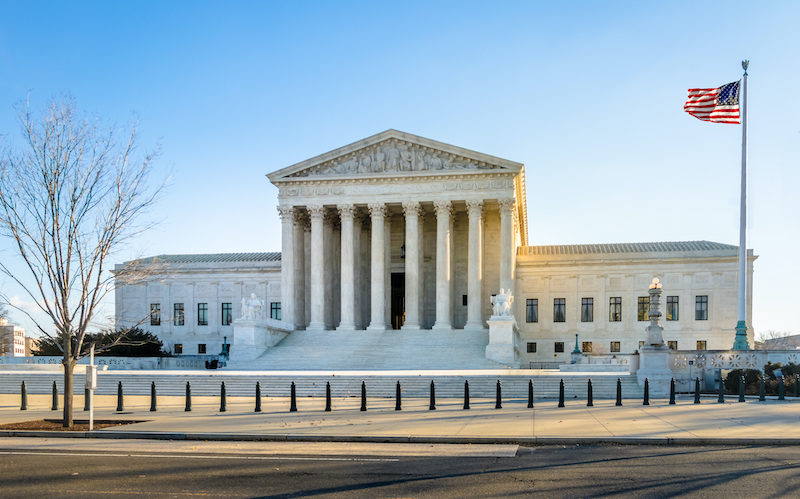
Policy-free textual analysis wins when interpreting causation standards in statutory text for employment actions.
In two separate decisions this spring—Comcast v. National Association of African American-Owned Media and Babb v. Wilkie—the U.S. Supreme Court marked more clearly the path it will tread in determining the role that discriminatory or retaliatory motivation must play to make a particular employment decision or process unlawful.
In earlier decisions in Gross v. FBL Financial Services, Inc. and University of Texas Southwestern Medical Center v. Nassar, the Court had read the unqualified use of the word “because” in anti-discrimination statutes to require a showing of “but-for” causation as is common in tort law. Gross and Nassar, in other words, required plaintiffs to prove not just the existence of a discriminatory or retaliatory motive but also that a challenged employment action would not have occurred in the absence of that motive.
These earlier decisions both recognized that the U.S. Congress could set a less demanding causation standard, such as the “motivating factor” standard that Section 107(a) of the Civil Rights Act of 1991 explicitly provides for Title VII-prohibited discrimination. The motivating factor standard is a less strict standard that prohibits adverse employment decisions when impermissible discrimination plays a motivating, even if not conclusive, role in an employer’s decision. But the majority opinions in Gross and Nassar did not assess how difficult it would be to modify what seemed to be a default but-for standard under statutory language less explicit than that of Section 107(a).
The Comcast and Babb decisions have now provided such an assessment.
Comcast considered a district court’s dismissal of a complaint that the plaintiff’s race had played a role in the cable television conglomerate’s refusal to carry the plaintiff’s channels. The plaintiff brought the complaint under Section 1981 of the Civil Rights Act of 1866, which guarantees “all persons … the same right … to make and enforce contracts … as is enjoyed by white citizens.” The Court unanimously held that the private right of action implied in Section 1981’s guarantee of equality should include tort law’s normal but-for causation standard, even without the statute’s express use of “because” or other reference to causation. Justice Neil Gorsuch found support for the but-for causation standard in the “larger structure and history of the Civil Rights Act of 1866,” and by posing the counterfactual: “What would have happened if the plaintiff had been white?” He then generally concluded that a but-for causation standard should be imposed in the absence of language that can be construed to indicate a contrary congressional intent.
The Babb decision, however, indicated that the Court will not require statutory language sufficient to overturn some strong presumption in favor of but-for causation to find a less demanding causation standard.
Babb suggests that if statutory language about causation exists, it can be analyzed for congressional intent under normal principles of textual construction. Babb closely parses language in the Age Discrimination in Employment Act of 1967’s provision, Section 633a(a), that covers the federal sector. In contrast to Section 623(a) as interpreted in Gross, which covers the private sector and state and local governments, the federal sector provision does not simply prohibit personnel actions “because of” age. Rather, Section 633a(a) requires that such actions “shall be made free from any discrimination based on age.”
In an opinion penned by Justice Samuel Alito on behalf of an eight-justice majority, the Court in Babb found “two matters of syntax” to be “critical” to its determination that congressional intent prohibits any consideration of age in federal sector employment decision-making, even where age is not “a but-for cause of a personnel action itself.” First, the phrase “based on age” modifies “discrimination” rather than “personnel actions,” so only the discrimination must be because of age, not the challenged action. Second, “free from any discrimination” modifies the verb “made,” so the decision-making process must be free of the taint of considering age.
Justice Clarence Thomas was the sole dissenter in Babb. Although he unconvincingly attempted to counter Justice Alito’s textual analysis, the underlying source of Justice Thomas’s disagreement was his weighing of the force of the default rule. He concluded that the default rule not only defines the meaning of “because” or “based on,” but also establishes the presumption of a but-for standard, with weight against any ambiguity. Justice Thomas contended, in part based on his policy views, that the majority’s interpretation would encourage too many people to bring claims and that the but-for causation default rule should control unless it is “clearly displaced” by the statutory text. The majority opinion rejected this view in favor of the kind of presumption-free and policy-free analysis of statutory meaning that the current Court purports to provide to all legislative text.
Together, Comcast and Babb should make clear for Congress, lower courts, and lawyers how the Court would treat causation under other anti-discrimination provisions. Where a provision simply proscribes personnel actions “because of,” “based on,” or “on the basis of” discrimination—as in the case of the Americans with Disabilities Act—the but-for default causation rule applies. Where a statute’s proscription provides more text related to causation, however—such as in the Age Discrimination in Employment Act’s federal-sector provision interpreted in Babb, or the Family Medical Leave Act’s prohibition of the interference, restraint, or denial of rights to unpaid leave—normal textual analysis must be used, free of any policy-based presumption in favor of but-for causation.
Regardless, causation standard cases under other provisions will continue to be litigated in the lower courts, especially in mixed-motives cases where plaintiffs have direct evidence of discriminatory intent but cannot fully disprove as pretextual an employer’s justification for an adverse personnel action. In such cases, liability will often turn on whether the statute demands but-for causation.
Although proof of pretext offers a plaintiff a route to prove but-for causation, it is not uncommon for a plaintiff to have stronger direct proof of bad motive than to have proof of the absence of a legitimate motive. In Babb, for instance, the plaintiff offered evidence that the supervisors who had rendered several adverse personnel decisions against her also had made age-related comments—but in the trial court’s view, she did not have adequate evidence to demonstrate that the employer’s justifications for the adverse actions were pretextual.
The Babb Court acknowledged that the “lesser motivating factor” causation standard would not allow the plaintiff there to obtain relief that alters or compensates for a personnel action. For that kind of relief, a plaintiff must show that impermissible age discrimination was a but-for cause. This would have been the case, too, in the absence of any discriminatory motive at all. The Court held, though, that proper prospective relief, and presumably attorneys’ fees, may be available.
This essay is part of a series entitled The Supreme Court’s 2019-2020 Regulatory Term.




